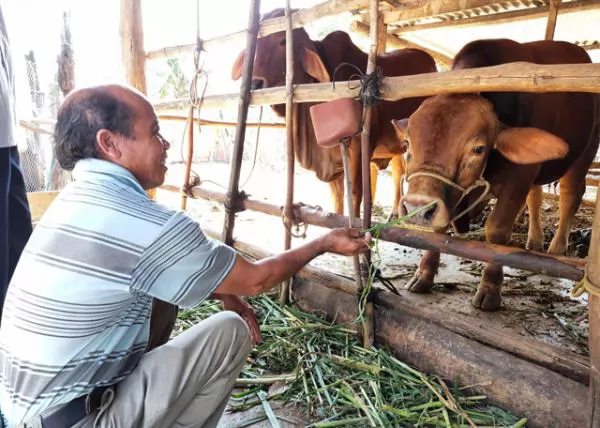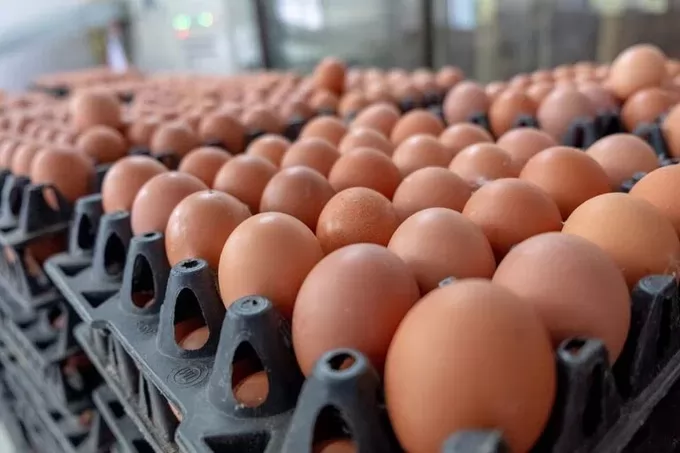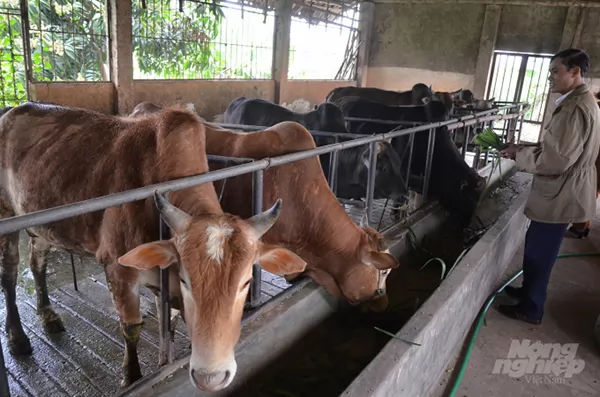Pheasants make farmers rich

Tran Van Chuc poses with a pheasant in his farm in central Quang Nam Province's Duy Thu Commune. — VNS Photo Do Truong
Do Truong
QUANG NAM (VNS) — Tran Van Chuc, an official at Duy Thu Commune's People's Committee in central Quang Nam, has a love for pheasants and has taught farmers how to make a living raising them.
Chuc graduated from the Hue College of Economics in 2012 with a thesis on raising pheasants. After that he decided he wanted to turn his 200sq.m garden into a pheasant farm. Through the process he found out that anyone with several million dong could start their own business raising pheasants – and since then he's sold birds to local farmers at low prices and coached them on raising the birds to make a living.
Back when his interest in pheasants began, Chuc visited bird farms in Ha Noi to learn more about how to raise them. He then bought four pheasants for VND5 million (US$232).
The birds grew quickly. He fed them a simple diet of rice, corn, bran and industrial food. After four months, the birds weighed between 1.5 and 2.2 kilos. Three months later, three of them began laying eggs.
Chuc set up an incubator and put the eggs inside, and young birds hatched from most of them, to his surprise.
"Pheasants are more resistant to disease, eat less and bring more meat than chickens," he said. "Especially, their waste is not as horrible as chickens, so they can be raised in residential areas."
Now Chuc has 50 pheasants for breeding and many young fowls at his farm. He earns VND15 million ($697) per month.
"What the birds need are 20-centimetre-deep sand, a system for supplying water and food, and warmth from several light bulbs for newborn chicks. The raising process is quite similar to raising chickens," he said.
Moreover, the cost of food for pheasants was only 30 per cent for that used by chickens, he added.
The hardest part was the high cost of purchasing the birds – VND50,000 ($2.30) for a baby bird and VND200,000 ($9.30) per kilo for a big one. That was what first prevented him from developing the model for local farmers.
"They said the price was too high and the birds would be difficult to sell," he said.
Chuc has decided to offer a special promotion to local farmers: buy one baby bird get one free. Now 30 households have purchased his pheasants, and he has shown them how to raise them and start their own business. He has been invited to lecture about the pheasants at some colleges.
"I'm ready to guide the techniques to anyone who are interested in," he said.
Phan Dinh Son, chairman of the communal People's Committee, said raising pheasants has created a new path for farmers who wanted to switch jobs.
In order to focus on his newfound pheasant-based career, Chuc resigned his position at the communal authority. He plans to enlarge his farm to a capacity of 1,000 birds.
"I just want to introduce a new model that helps farmers ease their hardships, reduce risks and earn more money," he said. — VNS
Maybe you are interested

Gia Lai seeks to improve quality of beef cattle through cross-breeding
GIA LAI — Gia Lai Province, which has the largest beef cattle herd in the Tây Nguyên (Central Highlands) region, has undertaken many programmes to develop the quality of its animals by crossing native cows and hybrid bulls.

European project aims at sustainable and resilient egg production
Under the name Omelette, 11 institutions and companies from 5 European countries recently started a project to stimulate the evolution towards future-orientated, sustainable and resilient egg production in North-West Europe.

Vietnamese beef cattle breed favored by China
(VAN)- The Vietnamese yellow cattle that seemed to have gone extinct because it was small, slow growing, and thus eliminated, now has been suddenly hunted for high prices by Chinese traders.





